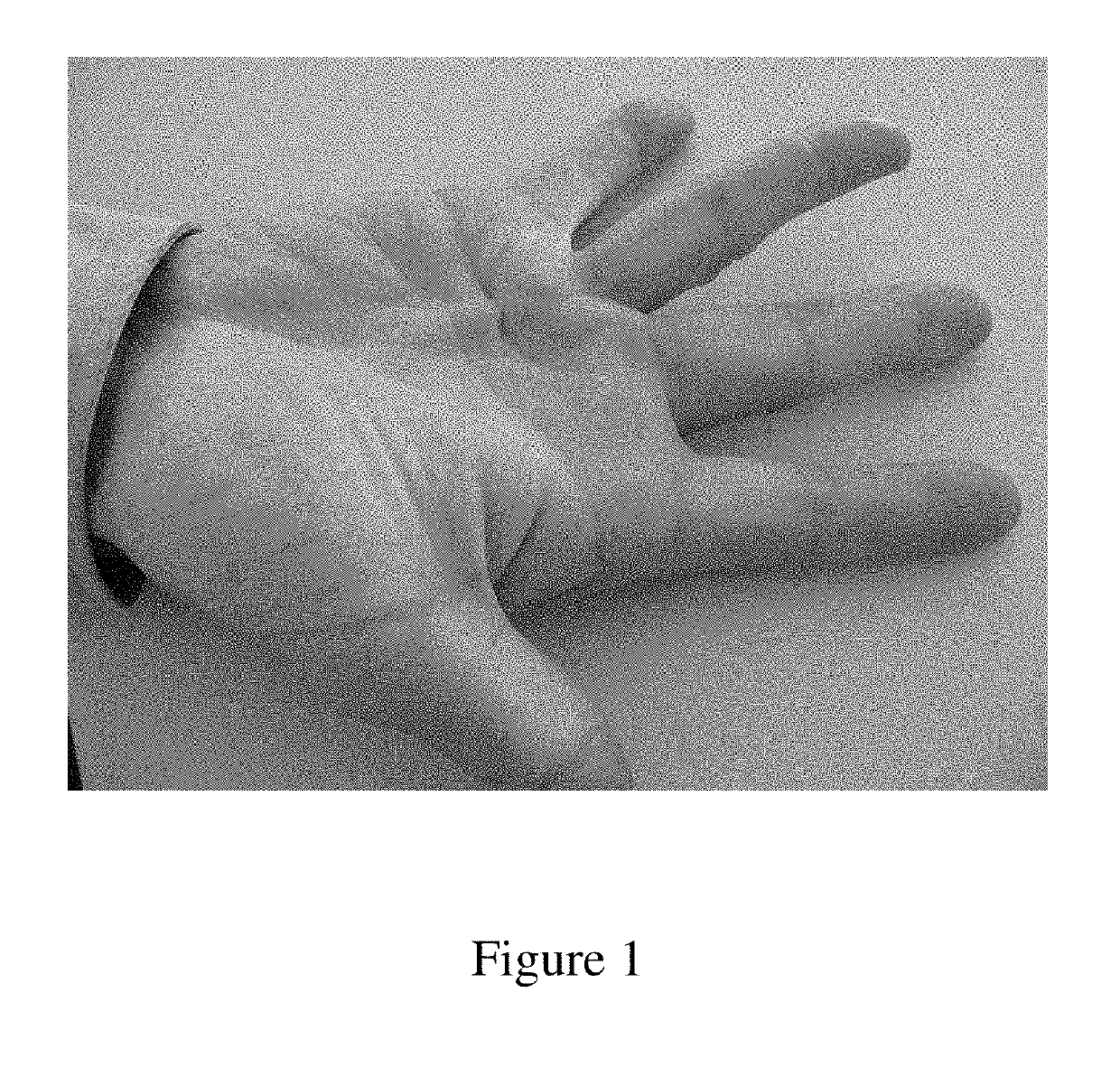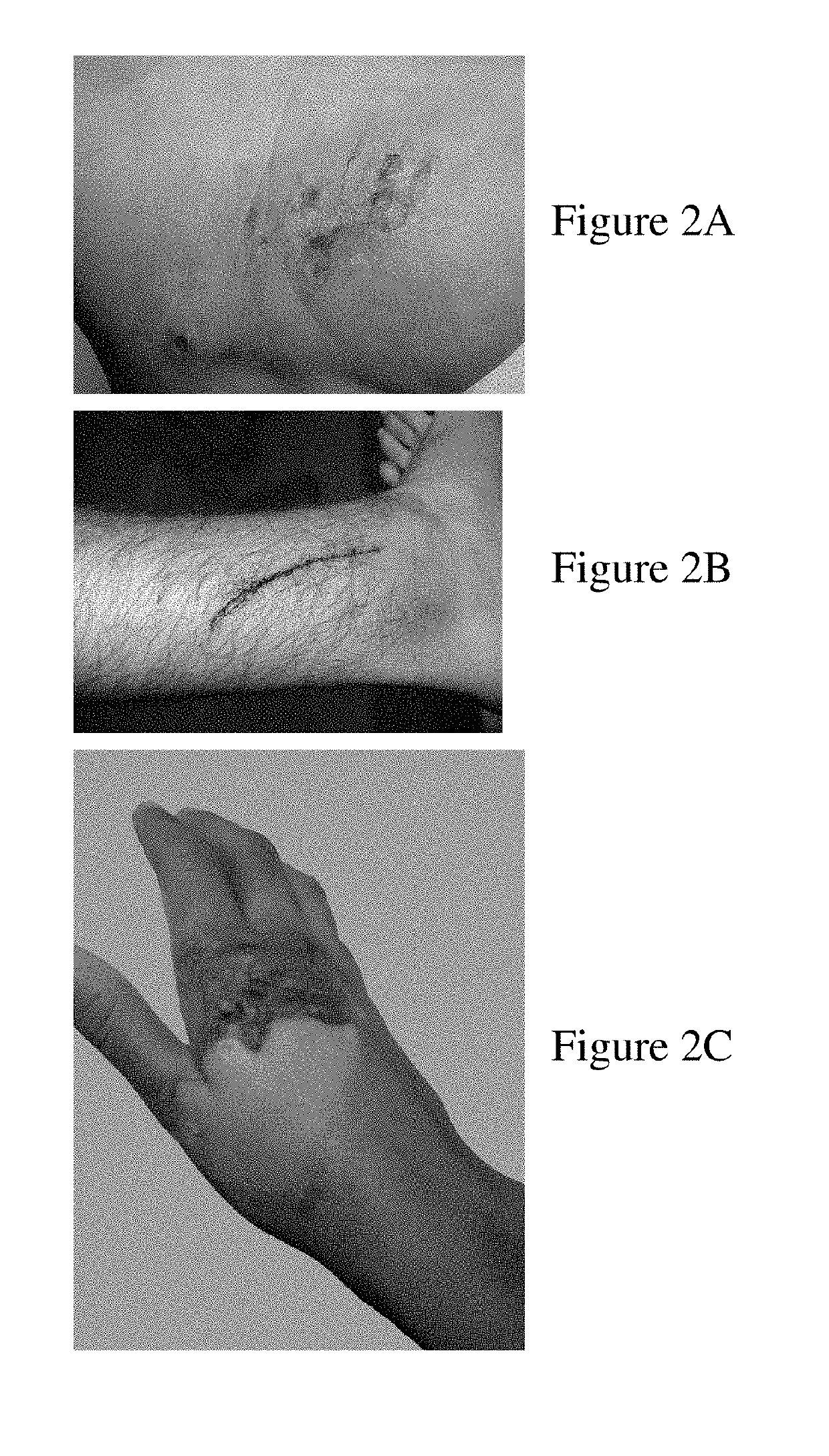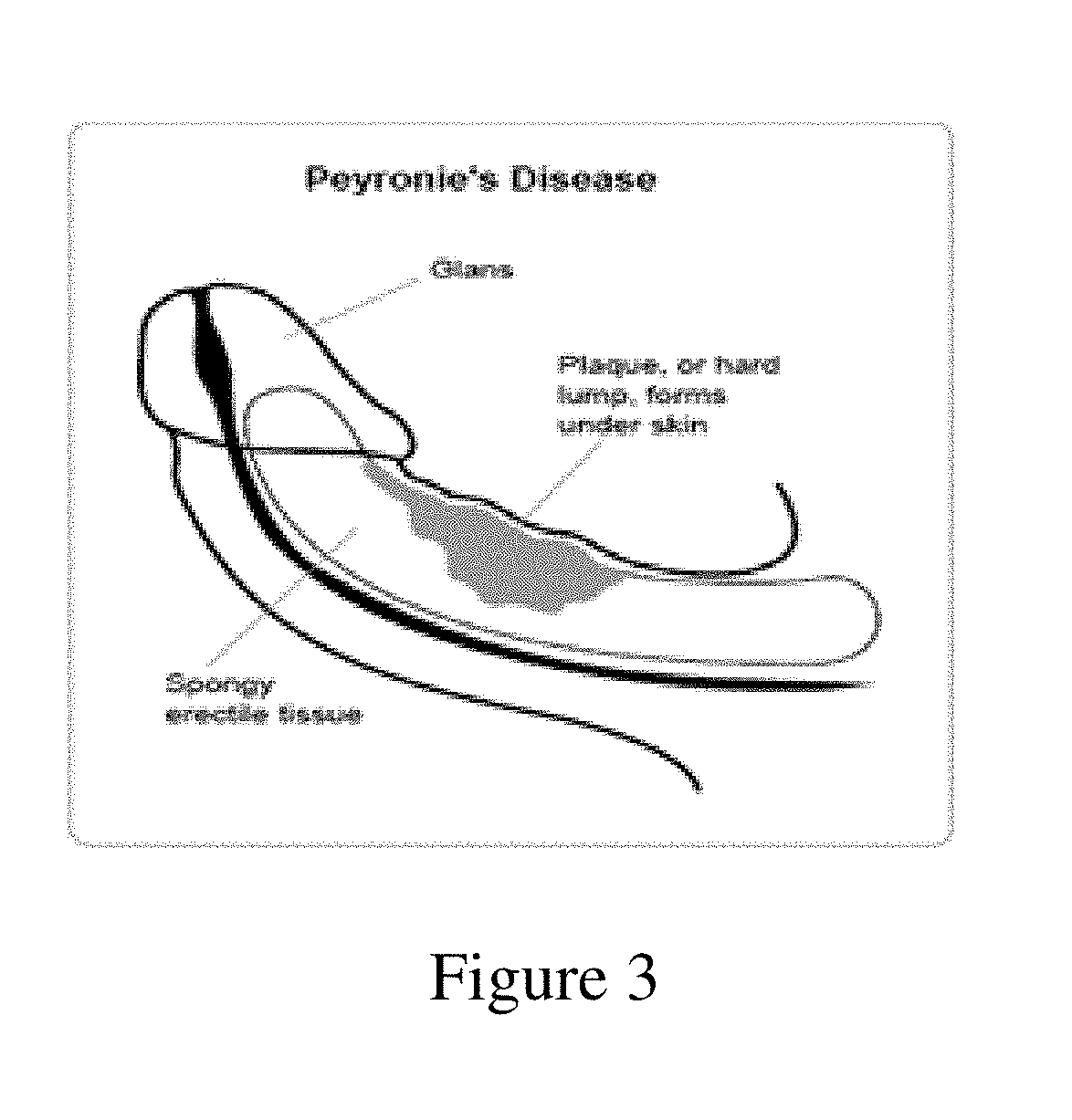Topical Compositions, Process of Manufacture and Method of Use
a technology for orphan diseases and compositions, applied in the field of compositions for the treatment of topical orphan diseases and related syndromes, can solve the problems of little awareness, few treatments are investigated, and the treatment of orphan diseases poses problems
- Summary
- Abstract
- Description
- Claims
- Application Information
AI Technical Summary
Benefits of technology
Problems solved by technology
Method used
Image
Examples
example 1
[0307]Dupytren's Disease of the hands is an early form of what most likely will evolve overtime into Dupytren's Contracture of the hands. This relatively infrequent disease is based on northern European ancestry that increases in incidence typically from age 45-50 years of age with increasing incidence and severity of existing disease throughout the rest of these people's lives. There is a mild increase in the incidence of males over females in the progression of the disease. The earlier in life it begins the expectation of more accelerated progression and the involvement of more fingers will be experienced. It converts from Dupuytren's Disease to Dupuytren's Contracture when the fingers begin to bend in towards the palms. The abnormality begins as the Disease with the discovery of a subcutaneous nodule on the palmar surface of the hand that is usually not tender at the base of fingers 3, 4, and 5 on either hand. After a relatively short time, abnormal skin folds begin to develop be...
example 2
[0309]White male, 69 years old, developed palm nodules and skin folds at base of both left and right hands with rigid third digits in 2014. When the left hand had progressed to bend towards the palm at 5 degrees in 2015, the first preliminary product formulation used twice daily, thoroughly rubbing it into the skin, made nodules disappear and stopped progression of contracture of third digit. The composition was applied to both fingers twice a day. Within a few weeks of using the composition, the nodule size and thickness began to decrease, first on the left hand and then followed on the right hand. More importantly, the left fourth finger had returned back to vertical, reversing from the early Contracture Stage back to the Disease Stage of Dupuytren's. Many months usage of the product kept these progressions limited. However, when no product was available for 6 months in 2017, ventral surface cords developed with new chords extending into the palm on both the left and right hands e...
example 3
[0310]White male, 66 years of age developed skin nodules and skin folds on left and right third digits at the base. Both nodules disappeared and skin folds decreased with 6 months of twice a day applications.
PUM
| Property | Measurement | Unit |
|---|---|---|
| Temperature | aaaaa | aaaaa |
| Temperature | aaaaa | aaaaa |
| Temperature | aaaaa | aaaaa |
Abstract
Description
Claims
Application Information
 Login to View More
Login to View More - R&D
- Intellectual Property
- Life Sciences
- Materials
- Tech Scout
- Unparalleled Data Quality
- Higher Quality Content
- 60% Fewer Hallucinations
Browse by: Latest US Patents, China's latest patents, Technical Efficacy Thesaurus, Application Domain, Technology Topic, Popular Technical Reports.
© 2025 PatSnap. All rights reserved.Legal|Privacy policy|Modern Slavery Act Transparency Statement|Sitemap|About US| Contact US: help@patsnap.com



